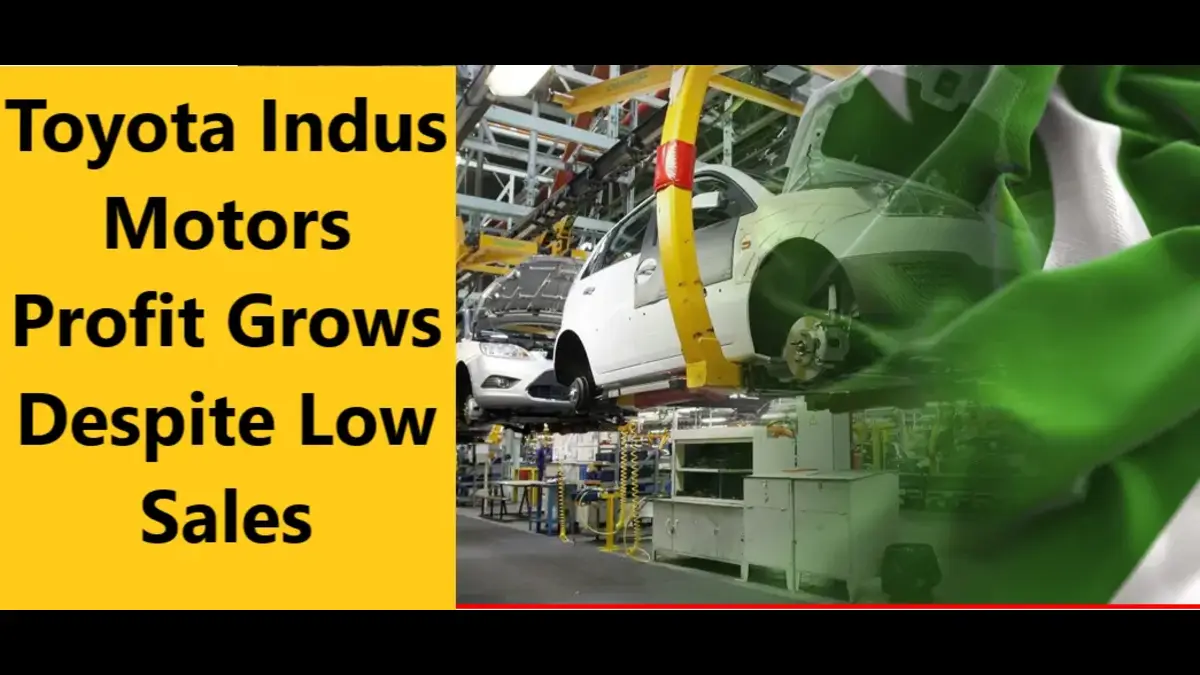Toyota Indus Motors Profit Grows Despite Low Sales.
A 56% increase in earnings per share (EPS), reaching Rs 191.76, despite 33% drop-in total units sold compared to the previous year.
Case Study: Profitability of Toyota Indus Motors amongst Challenges of the Industry
The global automotive sector is a witness to an influx of headwinds.
Lower consumer demand, coupled with an increase in production cost, is wrinkling profit margins of manufacturers across the globe.
Read More: Car Sales Brought Rs 300 Billion Last Year in Taxes
In this growth-interrupted environment, established players are forced to innovate and adapt for survival.
But one company has decided to buck this trend. The largest manufacturer of cars in Pakistan, Toyota Indus Motors, pulled off that rare stroke-an upsurge in profitability when all lines were indicating a fall in sales.
How Did They Do It?
The success story of TIM depended on a strategic shift in their pricing strategy.
Here’s a breakdown of their key moves:
- Price Optimization: The decrease in sales volume meant that TIM had to resort to a strategic price increase for their vehicles. Although this helped the firm improve their profit margins on each car sold, it again curtailed the harsh effects of low sales figures on the company. While this may render things less affordable for the consumers in the near run, it has managed to keep the company’s financial health in order in the long run.
- Converting Losses into Profits: The turnaround has been dramatic:. During the first quarter of the previous fiscal year, at one point in time, their fate was such that TIM was selling its cars at a loss against high costs of production. If the average loss per unit sold was Rs 265,000, their fortunes completely reversed at the end of that year – an average profit of Rs 731,500 per unit! This is primarily because of the improved margins from their revised pricing strategy. Beyond Price Hikes: A Multi-Pronged Approach. While the price hike played a very critical role, there is a good probability that TIM must have also adopted other measures to decrease cost. This could have included:
- Smoother Production: Smoothening the production lines and removal of wastage can considerably reduce the overall cost of production.
- Supplier Negotiations: Better deals can be negotiated with the suppliers of parts and raw material which would result in cost savings.
- Focus on Efficiency: More profitability can be achieved by implementation of lean manufacturing practices and increase in workforce efficiency.
Lessons Learnt and The Road Ahead
The case of Toyota Indus Motors does indeed carry a valuable lesson in store for many other automakers that are struggling to stay afloat in the high Briggs market. The way they adapted to prioritize profitability through strategic pricing-which was probably complimented by cost-cutting measures-is a blueprint for navigating the times of turbulence.
Look to the Future: Innovation and Adaptation Are the Keys
With the automotive landscape continuing to change, including electric vehicle adoption and new consumer preferences, among other factors, TIM’s innovation and adaptability will be integral in their long-term success. This recent performance depicts agility and strategic thinking, which places them well for future challenges and positions them to remain atop the Pakistan automotive industry.
What do you think about the strategy of Toyota Indus Motors? Share your views in the comments section!
Note: The information above might not be accepted 100%. Please verify from your own sources. We will not be responsible for any kind of loss due to our content.
For more news, please visit Munafa Marketing.




